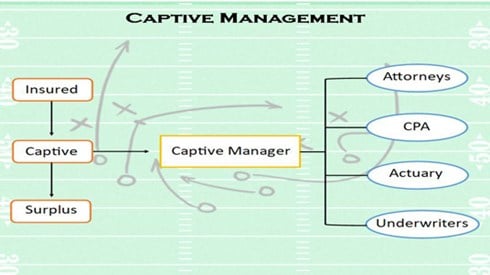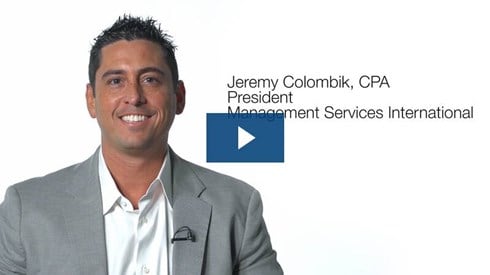How Does a Captive Insurance Company Work?

Jeremy Colombik | November 20, 2019

A captive insurance company operates in a similar way to a traditional property and casualty insurance company. A captive issues policies, processes claims, follows all applicable regulations, files a property and casualty insurance company income tax return, and has profits, if profitable, available to the insurance company owners. The difference is, with an insured-owned captive insurance company, the captive owner(s) decide whether or not to retain or distribute the company's profits. With a traditional insurance company, the insurer and its shareholders, rather than the insureds, retain the profits.
Within this article, we will be discussing how a captive is structured and set up, as well as how policy premiums flow from the captive owner's business to the captive insurance company. We will also discuss how the captive owner can invest and retain profits in the captive as well as receive dividends from the captive.
While the specifics of an arrangement may vary, a captive insurance structure frequently involves the captive owner's operating company paying premiums to a ceding or fronting company, which is a term that describes the insurance company that underwrites the captive insurance policy, or "writes the paper." The company that writes the paper issues the actual insurance policy to the business that is purchasing coverage, the insured. The captive then generally reinsures the fronting or ceding company through a common type of agreement called a "quota share agreement." A quota share agreement is a pro rata reinsurance contract where the insurer and reinsurer share premiums and losses according to a fixed predetermined percentage.
For example, if the fronting or ceding company each shares 50 percent of the risks, the fronting or ceding company then retains 50 percent of the premiums. A typical quota share agreement that falls within the Internal Revenue Service safe harbor rules for risk shifting and risk distribution is one where at least 50 percent of the risk must be shared.
For instance, if an insured pays $1 million in premium to a fronting or ceding company, $500,000 would initially be retained or held back by the fronting or ceding company for claims. The remaining $500,000 would be transferred to the captive insurance company that is reinsuring 50 percent of the risk from the fronting or ceding company. After the initial holdback or retention by the fronting or ceding company and after claims history and an actuarial analysis are factored in, at a certain point, the fronting or ceding company could release half of the remaining premium that was initially held back.
In this example, the initial amount held back is $500,000, and releasing half of this results in an additional $250,000 release. The holdback, prior to release, is generally invested as an insurance company reserve and normally includes interest earned or investment income on the retained funds reduced by the cost of any claims. The final $250,000 (out of the initial $500,000 holdback) is typically released by the fronting or ceding company after all policies issued by the fronting and ceding company have expired and have been provided an additional time period to file claims.
The additional claims period is generally 45 to 60 days from the policy expiration date. Typically, after this 45-to-60-day period, the fronting or ceding company will transfer such remaining funds to the captive in addition to any investment income earned while the funds were retained, reduced by the paid and outstanding claims amount and a ceding fee. A fronting or ceding fee is the fee charged by a fronting or ceding company to the captive for issuing policies and pooling the insurance risk.
A question often posed by captive owners is, What happens after the captive receives its premiums from the fronting or ceding company?
Where does this money go?
The captive's profits become part of its surplus. Surplus funds (assets minus liabilities) may be invested pursuant to the approved investment policy of the jurisdiction where the captive is licensed and governed. Importantly, surplus is also used to determine an insurance company's economic strength or viability and is used in many financial ratios to analyze an insurance company's viability.
Do the surplus funds have to be retained indefinitely?
No.
Or more germane to a captive owner, how are profits taken out of the captive?
Remember, like any company, a captive has the ability to distribute dividends to its owner shareholders. As captive dividends are generally qualified dividends, the distribution of profits may be income tax advantageous to a captive owner. Keep in mind that the process for receiving a dividend from a captive is more complex than it is for owners of a nonregulated company. As a regulated and licensed insurance company, approval is generally required from the department of insurance within the jurisdiction where the captive is licensed. To begin the dividend process, the captive owner (or captive owners) asks the captive insurance manager to seek approval from the department of insurance. The department then reviews the insurance company financials to determine what effect taking a dividend has on the insurance company's ratios and its ability to pay claims. The department also performs additional financial testing as it deems reasonable and prudent within the jurisdiction's regulatory scheme. If the department of insurance approves the captive manager's request, then the captive insurance company may issue a dividend payment from the captive.
A captive is a licensed, regulated entity that must qualify within a jurisdiction as an insurance company and must comply with applicable rules and regulations. Like any business, a captive investor and shareholder enter into a transaction to earn a profit and retain the important ability to manage the operating company's risks. Once profitable, dividends are generally available within the purview of the department of insurance and its regulatory scheme for shareholders. As a licensed and regulated company, a captive insurance company will require additional care and attention over many businesses, but a captive's unique ability to manage risks and create profits for its owners can transform a business's insurance from merely a cost to a methodology of making risk management profitable.
Jeremy Colombik | November 20, 2019






